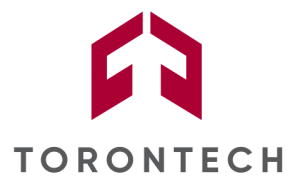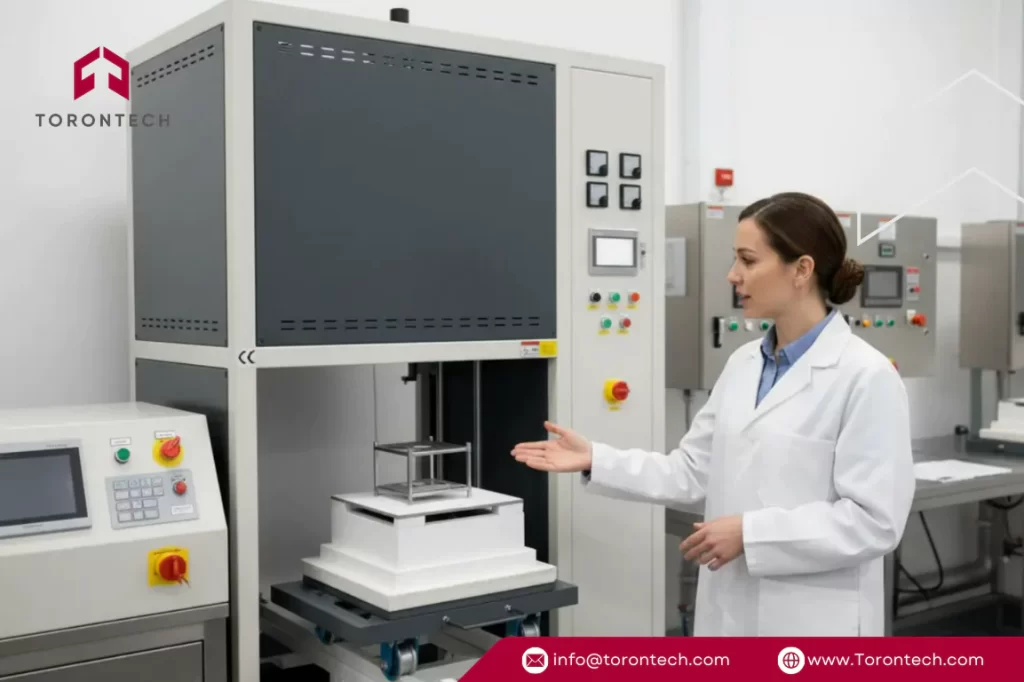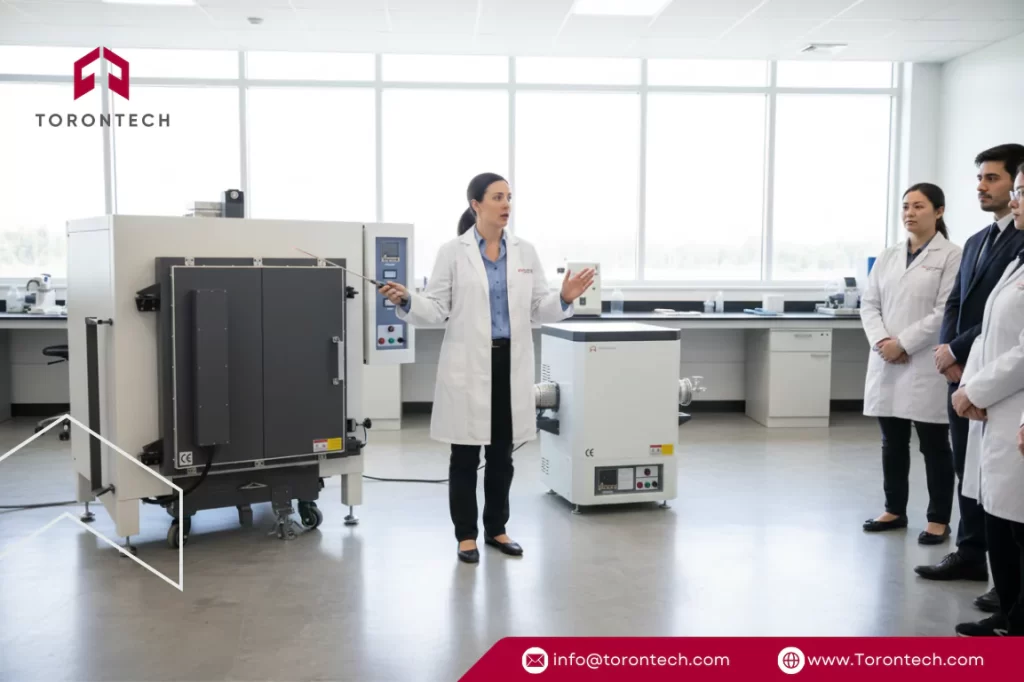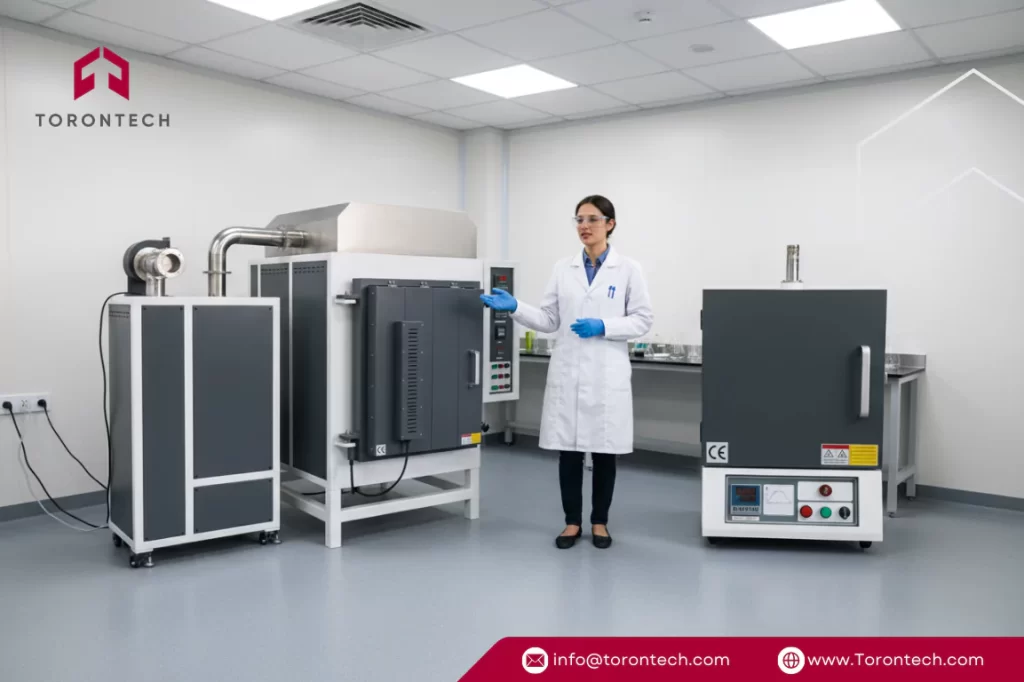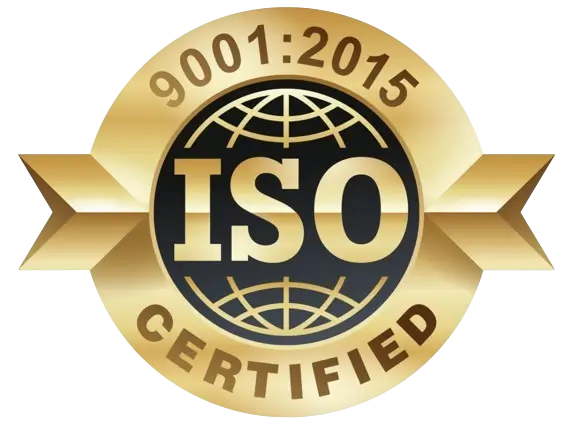For the applications where the results truly matter, choosing the right furnace is key.
While standard furnaces are the backbone of many operations, certain processes demand a higher level of precision. This is where a lifting furnace, also known as an elevator furnace, proves its worth. In our experience, once a team integrates one into their workflow for these specific jobs, they don’t look back.
In our experience, once a team integrates one into their workflow, they don’t look back.
This is the straightforward breakdown of what a lifting furnace is, why it’s in a different league from older designs, and how to choose the right one for your operations.
What Is a Lifting Furnace, Exactly?
The concept behind a lifting furnace is a straightforward, effective design. Instead of a front-facing door, the entire bottom floor of the furnace is a powered elevator platform.
The workflow is exceptionally practical: you arrange your components on the hearth at a safe, ergonomic height. At the push of a button, the platform makes a smooth ascent, carrying the workload into the heating chamber and forming a tight seal.
When the thermal cycle is finished, the platform descends for simple and safe unloading. We believe this “bottom-loading” method is the defining characteristic of a genuine high-performance elevator furnace.
It’s more than a novelty; the way it uses gravity to ensure a superior seal is the key to its performance. It’s the reason you get such remarkably even heating, maintain the integrity of your special atmospheres, and operate with far greater energy efficiency.
Lifting Furnace vs. Box Furnace
While the simple box furnace has its uses, our position is that the elevator furnace design offers decisive advantages for any high-temperature or atmosphere-controlled process.
A Superior Approach to Safety
With a conventional furnace, an operator often has to reach into a dangerously hot chamber. We see this as an unacceptable risk. The elevator furnace design removes this hazard. The platform is lowered completely out of the hot zone, allowing for full access. It’s a system that is far better prepared for a future with automation.
Guaranteed Process Integrity
Opening the door of a box furnace immediately causes major heat loss and introduces contaminants. From our standpoint, that’s a critical process failure. The lifting furnace’s hearth seal is exceptionally effective, preventing cold spots and ensuring true temperature uniformity. For any process that relies on a controlled atmosphere, we feel this design is a necessity.
Better Efficiency and a Longer Service Life
A tight seal means less energy is wasted. Furthermore, we’ve found that the internal elements of a lifting furnace are better protected from the thermal stress of door openings, which contributes to a longer and more reliable service life.
Related article: Tube Furnace vs Box Furnace: The Right Choice
Elevator Furnace Applications: A Real-World Scenario
Understanding the applications is key to understanding what an elevator furnace is used for. The equipment is the clear choice for industries where precision is the primary concern. To show what that means in practice, let’s look at a demanding, real-world scenario.
Example: Manufacturing a High-Performance Ceramic Component
- The Objective: An aerospace supplier needs to produce a batch of silicon carbide (SiC) parts. The assignment is to take a “green body” of pressed powder and sinter it at 1650°C in an inert gas atmosphere, transforming it into a fully dense final component.
- Why This Application Demands a Lifting Furnace: While a box furnace is excellent for many jobs, this specific application highlights the limitations. The large door opening could introduce contaminants and create a “cold zone,” which poses a risk to achieving the perfect material density required for aerospace components
- The Lifting Furnace Solution:
- Loading and Atmosphere: The green bodies are positioned on the hearth of our TT-LF-300-1700 Lifting Sintering Furnace. The chamber is then sealed and completely purged with high-purity argon gas.
- Uniform Thermal Processing: The lifting furnace executes a pre-programmed heating profile. Because the seal is so effective, the temperature inside remains incredibly stable, ensuring every part receives the exact same thermal treatment.
- Verifiable Results: The platform is lowered to reveal a batch of perfectly formed components, free of defects and ready to meet the highest performance standards.
We see this level of success repeated in other exacting fields:
- Dental Laboratories: Employing our Dental Sintering Lifting Furnace TT-LF-120-1800 to produce zirconia crowns with predictable strength and aesthetics.
- Research & Development: Giving research institutions the process control needed to explore new materials with a reliable elevator furnace.
- Industrial Heat Treatment: Ensuring that critical runs meet metallurgical specifications every single time.
Selecting the Right Lifting Furnace: Our Advice

Now that you’ve seen the kind of performance a lifting furnace delivers, the next step is matching the equipment to your goals. Based on our experience, these are the key decision points.
Your Required Temperature Range
This is the foundational specification. We advise customers to choose a model with a ceiling slightly above their highest process temperature. Our TT-LF-27-1200 is a capable and reliable choice for processes up to 1200°C. For more advanced work, a high-temperature elevator furnace like the TT-LF-321-1800C is required.
Chamber Size and Throughput
It is more effective to match the furnace volume to your typical workload. For R&D, a smaller chamber provides faster cycles. For production-scale work, a high-capacity lifting furnace like our Large Lifting Loading Furnace TT-LF-300-1700 is built to maximize output.
Application-Specific Features
Some jobs have no margin for error. We developed our Zirconia Sintering Lifting Furnace TT-LF-150-1700 because we know that using general-purpose equipment for such a sensitive application leads to inconsistent outcomes.
Process Automation
A sophisticated, programmable controller is a core component for ensuring quality and repeatability in your elevator furnace.
Torontech: Your Elevator Furnace Solution
The bottom line is this: investing in a lifting furnace is a business decision that pays off in higher quality, improved efficiency, and long-term value for specific, high-demand processes. The return you see from lower energy consumption, minimal product rejection, and increased throughput is substantial.
At Torontech, our focus is on delivering this advanced thermal technology in a cost-effective package. Our TT-LF Series lifting furnaces are built for dependability, giving you the high-performance features you need. Whether you require a versatile lab elevator furnace or a large-capacity system, we have a solution ready to be configured for your process.
We invite you to speak with our engineering team. We don’t just supply equipment; we build partnerships to find the most effective and economical lifting furnace solution for your operational goals. Contact us today, and let’s talk specifics about your application.
Need the Right Furnaces?
Explore cost-effective Torontech industrial and lab furnaces for reliable results.
Frequently Asked Questions (FAQ)
2. Is a lifting furnace more expensive upfront than a box furnace?
Yes, the initial investment for a lifting furnace is typically higher than for a basic box furnace due to its more complex mechanical system. However, we advise clients to look at the total cost of ownership. The higher energy efficiency, reduced scrap rates from superior temperature uniformity, and improved productivity mean the elevator furnace often provides a much better return on investment over its lifespan.
3. What kind of maintenance does an elevator furnace require?
The maintenance schedule for an elevator furnace is very similar to that of other high-temperature furnaces and primarily involves inspecting the heating elements and insulation. One key advantage we've found is that the components are often easier to access for service. The lifting mechanism itself is a robust, low-maintenance system designed for industrial use.
4. Can you customize a lifting furnace for our specific application?
Absolutely. Customization is standard for us. Nearly every lifting furnace we deliver is configured to a customer's specific needs, whether that means altering the chamber dimensions, adding specific atmospheric controls, integrating advanced programmable controllers, or modifying the loading platform. We build the furnace that fits your process.
5. What is the typical lead time for getting a new lifting furnace?
Lead time can vary based on the level of customization required and our current production schedule. A more standard elevator furnace model might be available more quickly, while a highly customized system will require a longer timeline for engineering and manufacturing. For an accurate delivery estimate, we recommend contacting our team to discuss the specifics of your project.
